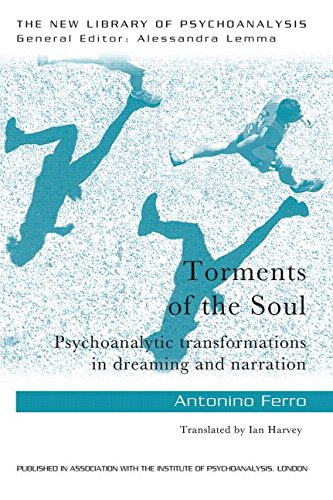

Most ebook files are in PDF format, so you can easily read them using various software such as Foxit Reader or directly on the Google Chrome browser.
Some ebook files are released by publishers in other formats such as .awz, .mobi, .epub, .fb2, etc. You may need to install specific software to read these formats on mobile/PC, such as Calibre.
Please read the tutorial at this link: https://ebookbell.com/faq
We offer FREE conversion to the popular formats you request; however, this may take some time. Therefore, right after payment, please email us, and we will try to provide the service as quickly as possible.
For some exceptional file formats or broken links (if any), please refrain from opening any disputes. Instead, email us first, and we will try to assist within a maximum of 6 hours.
EbookBell Team

4.8
74 reviewsIn Torments of the Soul, Antonino Ferro revisits and expands on a theme that has long been at the heart of his work: the study of dreams during sleep and in the waking state, and the psychoanalytic narrative. Following Bion, he focuses on the importance of what he sees as the task of contemporary psychoanalysis for generating, containing and transforming previously unmanageable emotions with a clinical psychoanalytic context.
Antonino Ferro explores the concepts of 'transformations in dreaming', the session as a dream, individuals transformed into characters, the interpretation of these characters, and readings of them as the functioning of a single mind or as an analytic field created by the meeting of two minds: the client's and the analyst's. Here, a new identity, the analytic field, is formed from the reverie of both participants, which makes it possible to work on complex, nonlinear phenomena in a radical way, creating a 'royal road' to the unconscious communication of the patient.
Torments of the Soul contains a plethora of clinical vignettes from the author's extensive psychoanalytic work with adults and children to illustrate the substantial theoretical progression he advocates here. Offering significant and important new interpretations of theories and ways of working with patients, this book will be essential reading for psychoanalysts, psychotherapists, psychologists, students of these fields and those interested in the human sciences.